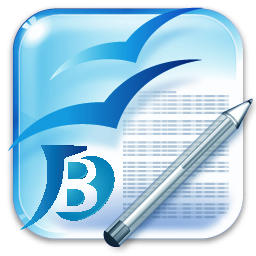Construction of biology critical thinking test of high school students
DOI:
https://doi.org/10.26555/bioedukatika.v9i1.16887Keywords:
Critical thinking, Polytomous scoring, Partial credit model, Reasoned multiple choiceAbstract
Students must have various abilities, one of which is critical thinking skills. Critical thinking is an ability that is an indicator of successful learning and is directly related to real life. Should carry out the development of critical thinking skills effectively and efficiently in education. Critical thinking skills of students, accurate measurement tools are needed. The measuring instrument is in the form of a test instrument developed through research. Conduct the researched with a quantitative approach by describing the characteristics of the critical thinking test instrument. The research method was the development of a test with the research subjects of class X MIPA students from seven public high schools in Kendal Regency with the criteria of high, medium, and low ranking schools. Developed the test in the form of multiple-choice reasoned with three scoring categories for each item according to the scoring of the polytomous items in the PCM 1-PL model (Partial Credit Model 1 Parameter Logistic). The feasibility test of the critical thinking test instrument was carried out with experts in measurement, assessment, and Biology Learning and was tested empirically on 1118 students. The research data were analyzed using the EXCEL, SPSS 16, QUEST and PARSCALE applications. The results showed that: (1) The test instrument with four categories of scores fit the PCM 1-PL model; (2) the test instrument has a high-reliability value; (3) The test instrument has a right level of difficulty; (4) The test instrument can be used to measure the ability of students in the range of -3.7 to 2.9. The test instrument developed was feasible to be used to measure students' critical thinking skills with three categories of polytomous scoring with the PCM 1-PL model.References
Adams, R. J., & Khoo, S. T. (1996). Quest: The interactive test analysis system version 2.1. The Australian Council for Educational Research.
Addy, T. M., LePrevost, C., & Stevenson, M. (2014). Thinking critically in undergraduate biology: Flipping the classroom and problem-based learning. Double Helix: A Journal of Critical Thinking and Writing, 2(1), 1–9. https://doi.org/10.37514/DBH-J.2014.2.1.09
Akbar, M. N., Firman, H., & Rusyati, L. (2017). Developing science virtual test to measure students’ critical thinking on living things and environmental sustainability theme. Journal of Physics: Conference Series, 812, 012106. https://doi.org/10.1088/1742-6596/812/1/012106
Anisa, A. (2017). Meningkatkan keterampilan berpikir kritis peserta didik melalui pembelajaran IPA berbasis potensi lokal Jepara. Jurnal Inovasi Pendidikan IPA, 3(1), 1–11. https://doi.org/10.21831/jipi.v3i1.8607
Arends, R. (2012). Learning to teach (9th ed.). McGraw-Hill.
Chiras, D. D. (1992). Teaching critical thinking skills in the biology & environmental science classrooms. The American Biology Teacher, 54(8), 464–468. https://doi.org/10.2307/4449551
Ennis, R. (2011). Critical thinking. Inquiry: Critical Thinking Across the Disciplines, 26(2), 5–19. https://doi.org/10.5840/inquiryctnews201126215
Guilford, J. P. (1956). Fundamental statistic in psychology and education (3rd ed.). McGraw-Hill.
Hambleton, R. K., Swaminathan, H., & Rogers, H. J. (1991). Fundamentals of item response theory. Sage Publications.
Hartini, H., & Sukardjo, S. (2015). Pengembangan higher order thinking multiple choice test untuk mengukur keterampilan berpikir kritis IPA kelas VII SMP/MTs. Jurnal Inovasi Pendidikan IPA, 1(1), 86–101. https://doi.org/10.21831/jipi.v1i1.4535
Hidayati, N. (2016). Hasil belajar dan keterampilan berpikir kritis siswa Madrasah Tsanawiyah dalam pembelajaran IPA melalui kerja ilmiah. Proceeding Biology Education Conference, 118–127. https://jurnal.uns.ac.id/prosbi/article/view/5672
Huber, C. R., & Kuncel, N. R. (2016). Does college teach critical thinking? A meta-analysis. Review of Educational Research, 86(2), 431–468. https://doi.org/10.3102/0034654315605917
Istiyono, Edi, Mardapi, D., & Suparno, S. (2014). Pengembangan tes kemampuan berpikir tingkat tinggi fisika (PysTHOTS) peserta didik SMA. Jurnal Penelitian Dan Evaluasi Pendidikan, 18(1), 1–12. https://doi.org/10.21831/pep.v18i1.2120
Istiyono, E, Mardapi, D., & Suparno, S. (2014). Effectiveness of reasoned objective choice test to measure higher order thinking skills in physics implementing of curriculum 2013. International Conference on Educational Research and Evaluation, 101–110. https://repository.bbg.ac.id/handle/399
Lane, S. (2015). Performance assessment. In L. Darling-Hammond & F. Adamson (Eds.), Beyond the Bubble Test (pp. 131–184). John Wiley & Sons, Inc. https://doi.org/10.1002/9781119210863.ch5
Mardapi, D. (2016). Pengukuran, penilaian dan evauasi pendidikan. Nuha Litera.
McPeck, J. E. (2016). Critical thinking and education. Routledge.
Moon, J. (2007). Critical thinking: An exploration of theory and practice (1st ed.). Routledge. https://doi.org/10.4324/9780203944882
Mukti, T. S., & Istiyono, E. (2018). Multiple-choice with reason (MCR) to measure the critical thinking skill on natural science: plant and animal movement system. 5th ICRIEMS Proceedings, 35–40. http://seminar.uny.ac.id/icriems/sites/seminar.uny.ac.id.icriems/files/proceeding2018/SE06_Taufiq Satria Mukti.pdf
Osterlind, S. J. (1998). Constructing test items: Multiple-choice, constructed-reponse, performance, and other format (Seconds). Kluwer Academic Publishers.
Palm, T. (2008). Performance assessment and authentic assessment: A conceptual analysis of the literature. Practical Assessment, Research, and Evaluation, 13, Article 4. https://doi.org/10.7275/0qpc-ws45
Paul, R., & Elder, L. (2005). A guide for educators to critical thinking competency standards: Standards, principles, performance indicators, and outcomes with a critical thinking master rubric. https://www.criticalthinking.org/resources/PDF/CT-competencies 2005.pdf
Putri, F. S., & Istiyono, E. (2017). The development of performance assessment of stem-based critical thinking skill in the high school physics lessons. INTERNATIONAL JOURNAL OF ENVIRONMENTAL & SCIENCE EDUCATION, 12(5), 1269–1281. http://www.ijese.net/makale/1894.html
Retnawati, H. (2015). The comparison of accuracy scores on the paper and pencil testing vs. computer-based testing. Turkish Online Journal of Educational Technology2, 14(4), 135–142. http://www.tojet.net/volumes/v14i4.pdf#page=144
Sternberg, R. J. (1986). Critical thinking: Its nature, measurement, and improvement. National Inst. of Education. https://eric.ed.gov/?id=ED272882
Subali, B. (2009). Pengembangan tes pengukuran keterampilan proses sains pola divergen mata pelajaran biologi SMA. Prosiding Seminar Nasional Biologi, Lingkungan Dan Pembelajarannya, 581–593. http://staff.uny.ac.id/sites/default/files/penelitian/Bambang Subali, Dr/semnas bio _Bambang Subali_UNY-2009.pdf
Subali, Bambang. (2011). Pengukuran kreativitas keterampilan proses sains dalam konteks assessment for learning. Jurnal Cakrawala Pendidikan, 30(1), 130–144. https://doi.org/10.21831/cp.v1i1.4196
Towle, A., & Twole, A. (1989). Modern biology. Holt Rinehart & Winston.
Widhiarso, W. (2010). Estimasi abilitas individu dengan metode maximum likelihood dalam pemodelan IRT. Repository Universitas Gajah Mada. https://repository.ugm.ac.id/275984/
Wilson, M. (2004). Constructing measures: An item response modeling approach. Routledge. https://doi.org/10.4324/9781410611697
York, T. T., Gibson, C., & Rankin, S. (2015). Defining and measuring academic success. Practical Assessment, Research, and Evaluation, 20, Article 5. https://doi.org/10.7275/hz5x-tx03
Downloads
Published
Issue
Section
License
Authors who publish with Jurnal Bioedukatika agree to the following terms:
- Authors retain copyright and grant the journal right of first publication with the work simultaneously licensed under a Creative Commons Attribution License (CC BY-SA 4.0) that allows others to share the work with an acknowledgment of the work's authorship and initial publication in this journal.
- Authors are able to enter into separate, additional contractual arrangements for the non-exclusive distribution of the journal's published version of the work (e.g., post it to an institutional repository or publish it in a book), with an acknowledgment of its initial publication in this journal.
- Authors are permitted and encouraged to post their work online (e.g., in institutional repositories or on their website) prior to and during the submission process, as it can lead to productive exchanges, as well as earlier and greater citation of published work.









